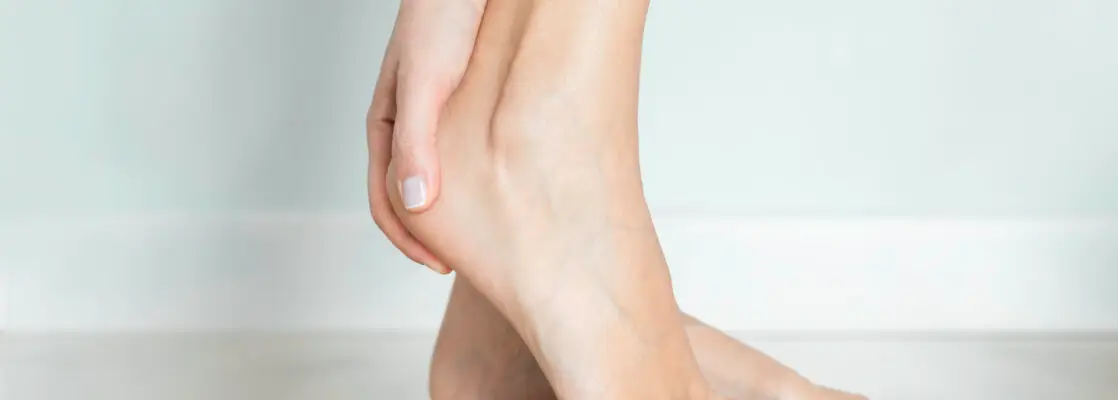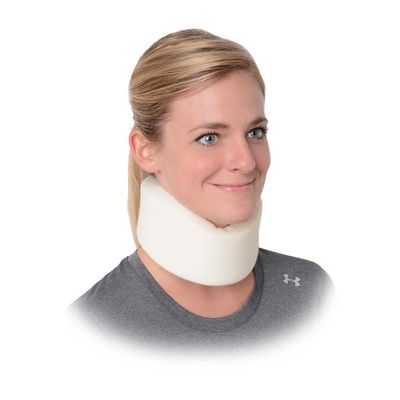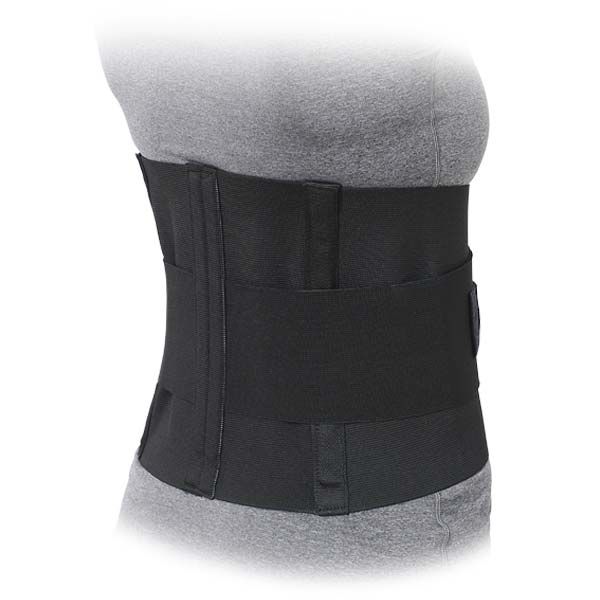
Foot & Ankle Brace
Lumbar Sacral = Back Support W/ Side Pulls
A back support with side pulls is a type of orthopedic brace designed to provide stability, compression, and support to the lower back, particularly in cases of lower back pain, injury, or strain. The addition of side pulls allows for adjustable compression and increased support, helping to alleviate pain and promote proper posture.
Key Features of a Back Support with Side Pulls
Adjustable Side Pulls
- Side pulls are adjustable straps or laces that allow users to tighten or loosen the brace as needed. This feature provides customizable compression and support to the lower back, enhancing comfort and effectiveness.
- The side pulls allow for easy adjustments throughout the day, accommodating changes in comfort level or activity.
Lumbar Support
- The brace is designed to target the lumbar region (lower back), providing support to the spine and surrounding muscles. This can help reduce stress on the back and prevent further injury.
Compression
- The compression provided by the brace helps reduce swelling and inflammation, which can lead to pain relief. Compression also promotes better posture and can improve muscle engagement in the lower back.
Breathable Material
- Many back supports with side pulls are made from breathable, moisture-wicking materials to ensure comfort during extended use. This helps reduce heat buildup and prevents skin irritation.
Ergonomic Design
- Designed to fit the natural curves of the back, the support is contoured to provide a snug and comfortable fit. The side pulls enable adjustments to fit a variety of body shapes and sizes.
Velcro or Hook-and-Loop Fastening
- The brace is usually secured with Velcro or hook-and-loop fasteners, allowing users to easily adjust the tightness for optimal support.
Uses of a Back Support with Side Pulls
Lower Back Pain Relief
- Ideal for people suffering from lower back pain due to muscle strain, overuse, or conditions like sciatica or herniated discs. The side pulls provide extra support to stabilize the lower back and alleviate pain.
Posture Improvement
- Helps correct poor posture by providing lumbar support and encouraging a more upright position. This can be particularly helpful for individuals who spend long hours sitting or standing in improper positions.
Injury Prevention
- Used by athletes, manual laborers, or individuals who perform heavy lifting to prevent lower back injuries. The brace adds extra stability to the spine and reduces the risk of strain or injury.
Post-Surgical Support
- Provides stability and reduces strain on the lower back following surgery or injury, promoting a faster recovery and preventing reinjury.
Chronic Back Conditions
- Beneficial for individuals with chronic back conditions such as degenerative disc disease, osteoarthritis, or lumbar stenosis. The adjustable side pulls allow for consistent support based on the level of discomfort.
Benefits of Back Support with Side Pulls
- Customizable Compression: The adjustable side pulls enable the user to tighten or loosen the brace, providing the right amount of compression based on activity level or pain.
- Improved Stability: By stabilizing the lower back and promoting proper posture, the brace helps reduce strain on the spine and surrounding muscles.
- Pain Relief: Compression and support can alleviate pain caused by injury, muscle strain, or chronic back conditions.
- Enhanced Mobility: Many users find that the brace allows them to continue daily activities with less pain, while still supporting their back.
How to Use a Back Support with Side Pulls
- Position the Brace: Center the back support over your lower back (lumbar region), ensuring it is sitting comfortably.
- Fasten the Brace: Secure the front closure (typically Velcro) around your abdomen. The brace should fit snugly but not too tight to restrict breathing or movement.
- Adjust Side Pulls: Tighten or loosen the side pulls as needed to customize the level of compression and support. Make sure the brace feels secure and provides adequate support without causing discomfort.
- Wear During Activity: Use the back support during activities that may strain your lower back, such as lifting, bending, or prolonged sitting/standing. You can also wear it during exercise if advised by a healthcare provider.
- Do Not Overuse: While a back support can be helpful for pain relief and injury prevention, it’s important not to become overly reliant on the brace. Overuse can lead to weakened back muscles. Gradually work on strengthening your back through physical therapy or exercises.
Care and Maintenance
- Follow the manufacturer’s instructions for cleaning and maintaining the back support. Most are hand-washable or machine-washable in a gentle cycle.
- Ensure that the brace is fully dry before wearing it again to prevent skin irritation or damage to the materials.
A back support with side pulls can be an effective tool for managing back pain, supporting posture, and preventing injury. It’s ideal for those with lower back issues who need adjustable support for varying levels of activity and comfort.
ORDER NUMBER: 501-W, 503-W, 505-W, 507-W, 507-W, 508-W, 509-W, 510-W, 511-W, 512-W
501-B, 503-B, 505-B, 507-B, 508-B, 509-B, 510-B, 511-B, 512-B
SIZE: X-Small thru 5X Large (see sizing chart to the left)
PRODUCT HIGHLIGHTS:
• Form-fitting 10" all-elastic with double pull side panels for additional support
• High quality Velcro™ closure for durability
• Four flexible stays in back panel for excellent support
INDICATIONS:
Ideal for providing support and compression for strains and sprains of the lower back.
SUGGESTED HCPC: L0625
Categories: Cervical, Spine & Abdominal


Table of Contents
Foot & Ankle Brace
Foot and ankle braces are orthopedic devices designed to provide support, stability, or protection to the foot and ankle. They are commonly used in cases of injury, chronic conditions, or after surgeries to aid in healing, prevent further injury, or manage pain and discomfort.
Types of Foot and Ankle Braces:
Ankle Stabilizers:
- Purpose: Often used for sprains, strains, or minor ankle injuries.
- Design: Typically have straps or laces that wrap around the ankle to provide compression and stability.
- Common Uses: Sports-related injuries, post-surgery recovery, or chronic ankle instability.
Lace-Up Braces:
- Purpose: Provide a higher level of support than soft braces.
- Design: Made of strong fabric with laces that tighten around the ankle, mimicking the feel of tape wrapping but offering more reusability.
- Common Uses: Ankle sprains, ligament injuries, or for athletes needing extra support during activity.
Ankle
Sleeves/Compression Socks:
- Purpose: Provide mild support and compression to improve blood flow and reduce swelling.
- Design: Elastic, lightweight material that fits snugly around the ankle.
- Common Uses: Mild swelling, soreness, or mild arthritis.
Walking Boots (CAM Boots):
- Purpose: Protect and immobilize the foot and ankle after a serious injury or surgery.
- Design: Hard, rigid outer shell with adjustable straps and a rocker sole to aid in walking.
- Common Uses: Post-surgical recovery, fractures, or severe sprains.
AFO (Ankle-Foot Orthosis):
- Purpose: Stabilizes the foot and ankle, often used for conditions that affect gait or muscle control.
- Design: A rigid or semi-rigid brace that fits into a shoe and extends upward along the leg.
- Common Uses: Conditions like drop foot, cerebral palsy, multiple sclerosis, or stroke recovery.
Night Splints:
- Purpose: Maintain foot and ankle positioning while sleeping, usually to treat plantar fasciitis or Achilles tendonitis.
- Design: Holds the foot in a dorsiflexed position to stretch the calf muscles and plantar fascia.
- Common Uses: Plantar fasciitis, Achilles tendonitis, or other conditions requiring a sustained stretch.
Common Uses and Benefits:
- Injury Recovery: After ankle sprains, fractures, or ligament tears, braces immobilize the area, aiding in faster healing.
- Chronic Conditions: People with chronic ankle instability or degenerative conditions like arthritis can use braces for everyday support and pain relief.
- Sports and Physical Activities: Athletes may wear braces during high-risk activities to prevent injuries.
- Post-Surgical Use: Braces help protect the healing area after surgeries like tendon repairs, ankle fusions, or fracture fixations.
Important Considerations:
- Proper Fit: Ill-fitting braces can lead to discomfort or worsen the injury, so professional fitting is often recommended.
- Material: Braces can be made from various materials like neoprene (for compression), plastic (for rigid support), or fabric.
- Level of Support: Depending on the severity of the injury or condition, different levels of rigidity and support may be necessary.
These devices are typically prescribed or recommended by healthcare professionals such as orthopedic doctors, podiatrists, or physical therapists, depending on the injury or condition.

